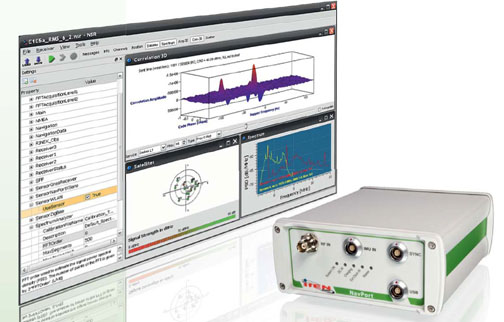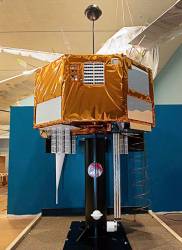
Nestled amid the slopes and valleys of southeastern Germany’s precipitous Alps, a novel installation has taken form over the past three years that will allow receiver designers and application developers to have real-world experience with Galileo signals years before Europe’s GNSS becomes operational.
Nestled amid the slopes and valleys of southeastern Germany’s precipitous Alps, a novel installation has taken form over the past three years that will allow receiver designers and application developers to have real-world experience with Galileo signals years before Europe’s GNSS becomes operational.
Beginning this spring, the Galileo Test and Development Environment, or GATE, has been transmitting Galileo signals from six ground-based transmitters erected on hills and mountains surrounding the picturesque Bavarian town of Berchtesgaden. To obtain a reasonably realistic emulation of the Galileo satellites, the GATE transmitters must be located high overhead to ensure good visibility (low risk of signal obstruction due to vegetation, buildings, topography, and so forth) and angle of arrival for the signals, while also surrounding the test area with simulated satellite transmissions.
This realistic test environment, which will open later this year for commercial activities, provides an opportunity for receiver, application, and service developers to perform field trials of Galileo hardware and software at an early stage. By conducting trials within the GATE facility, researchers and product designers can also incorporate signals from operational GNSS satellites, such as GPS or GLONASS, along with the Galileo test signals. In this way GATE will also support German and European products for Galileo entering the market.
This article presents the current project status and reports on the first experiences and results of the GATE segment acceptance tests as well as results from static and dynamic positioning trials at the facility.
Purpose and Design
Before implementation of GPS, the first full-fledged GNSS, the U.S. Air Force established a ground-based ranging test-bed at the Yuma Proving Grounds in Arizona during the 1970s to prove the concept of satellite navigation. Nearly 40 years later, no one doubts that Galileo will work from a conceptual point of view. However, developing the new GNSS remains an ambitious technological project, introducing a signal structure far more sophisticated than the GPS C/A code. In fact, GATE must fulfill three major mission objectives: signal experiments, receiver testing, and user applications.
. . .
GATE is a terrestrial test environment for developers of Galileo (or Galileo/GPS) receivers, applications, and services currently being built up in the region of Berchtesgaden, Germany. The facility will be operational from autumn 2007.
For further information on GATE please refer to the official project homepage http://www.gate-testbed.com.
(For the rest of this story, please download the complete article using the PDF link above.)





